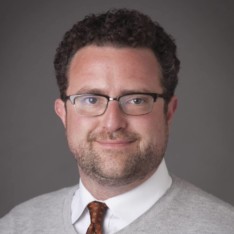We Need a COVID-19 Response for Real Human Beings

There’s a class of mathematical models in economics which use what we call “representative agents.” Basically, if you’re solving equations and proving theorems about an economy with millions of people, accounting for human diversity makes the math difficult to impossible. So we assume everyone is the same: same preferences, same starting endowments (wealth), or maybe we press the limits of the math and allow two or three kinds of people in our modeled economy, or let people differ along a single dimension.
The value of this approach in academia can be hashed out over decades. But in the research, policy, and public debate surrounding the COVID-19 pandemic, we need to escape the myopia of a representative-agent world, and we need to do it fast.
Everything about the way we approach this pandemic exists on a much larger than human scale, questions including but by no means limited to:
- How many new cases or deaths were reported today?
- Should the government lock down its population?
- Are we practicing social distancing?
- Are we wearing masks?
Note that these questions are divorced from any concept of human diversity. Many will respond that we have to make approximations or risk being paralyzed–we have to “do something.” But what if all our bandwidth, as researchers, politicians, consumers and producers of mass and social media, is being used up by the wrong questions?
Different Folks
Consider two groups of people “violating social distancing.” The first is a mountain town with a population just over 500, tucked into a part of Western New England most people don’t know exists, less than an hour from Quebec. Stores, restaurants, and bars are open. Masks are worn only by a small minority of the business proprietors and customers, not discouraged but not expected. People almost subconsciously keep a couple of feet further from each other than they likely would have six months ago, but no stickers on the floors of businesses are to be found.
Second, consider a one-time gathering, about twice as large as the population of that mountain town, of people who live in New York City or its surrounding metro area. The event is a charity concert, billed as following social-distancing guidelines and mandates, but by the end leads to enough flouting of those rules to produce photos and news articles that place it at the center of pandemic debates.
Policy and debate that focus only on the question “Social distancing: yes or no?” gloss over a virtually uncountable number of dimensions of human diversity. There are obviously many at play in the example above. Let’s focus on one seemingly straightforward dimension–the population density of where we live.
Density and Its Discontents
At first, the intuition that denser areas are more precarious in spreading COVID-19 doesn’t appear to hold water. A study led by a Johns Hopkins public health professor looked at data from 913 U.S. counties. Once the authors controlled for “factors such as race and education,” they couldn’t find a link between denser counties and higher transmission or number of deaths. The University’s website underscored the seemingly conclusive results of the paper, titled “Does Density Aggravate the COVID-19 Pandemic? Early Results and Lessons for Planners,” and its relevance:
“A new study suggests that denser places, assumed by many to be more conducive to the spread of the coronavirus that causes COVID-19, are not linked to higher infection rates. The study, led by a researcher at the Johns Hopkins Bloomberg School of Public Health, also found that dense areas were associated with lower COVID-19 death rates.…
Recent polls suggest that many Americans now consider an exodus from big cities likely, possibly due to the belief that more density equals more infection risk. Some government officials have posited that urban density is linked to the transmissibility of the virus.”
In the paper itself, the authors correctly denounce the myopia of the debate about crowding, distinct from their concept of density though ubiquitous in the news media: “Notwithstanding evening news reports of crowding on beaches and at protest events, we suspect crowding is the exception in this period of social distancing.”
Contrast that with the authors’ statistical analysis which yields results that lead researcher Shima Hamidi characterizes in the news article as “important, unexpected, and profound.” The portion of the paper’s abstract titled “Takeaway for practice” certainly concurs:
“Large metropolitan areas with a higher number of counties tightly linked together through economic, social, and commuting relationships are the most vulnerable to the pandemic outbreaks.”
Then again, the researchers looked at highly aggregated data, at the county level, and used one core measure of density, succinctly described in the paper’s text: “We summed the county population and employment and divided it by the land area.”
A county’s population plus employment per square foot can mask a whole lot of human diversity. Once again, let’s drill a level deeper.
Densities, Not Density
The Hopkins paper gets an almost ludicrous amount of policy mileage from a variable requiring nothing more than a Census summary table and a Microsoft Excel drag-and-drop to calculate. Still, the authors put themselves comfortably in the upper half of sophistication on these issues simply by differentiating between tabloid-media crowding and the density emerging from the realities of our home and professional lives.
But what of that home- and professional-life density? “You have to think a lot smaller,” writes WIRED science correspondent Adam Rogers.
Surveying early COVID-19 research in May of this year, Rogers correctly sees that there are density differences within cities or counties so important as to dwarf the aggregate differences across cities and counties:
“When it comes to density, the trick is picking a scale. Covid-19 isn’t a problem of square kilometers, but one of square meters—of the number of people per unit of housing. Epidemiologists’ best idea about what’s happening here is that the virus is transmitted most easily when an infected person is in close contact with people for extended periods of time.”
In big cities such as New York, the web of issues surrounding poverty puts people in the worst of situations:
“An analysis from the housing-focused Furman Center at New York University lays out this answer more starkly: Mortality rates were higher in neighborhoods with lower incomes and less density across the geographic space but more density in a given home. That is, more people sharing a room or an apartment.”
When we ask big questions like “how does density impact COVID-19 transmission,” and then question the results through the lens of how real human beings carry on their day-to-day, even minute-to-minute lives, we see an essentially fractal pattern. As new details come into focus that shatter the logic of our previous conclusions, the next level of detail which will doom our attempts to put a bow on whatever new conclusions we might make starts to come into view.
At the same time, our exercise drilling down has yielded some important and actionable, if not headline-grabbing, policy conclusions. High-density housing units, often associated with low-income neighborhoods, are a particularly problematic place for transmission of COVID-19. Public health researchers should focus on the special challenges faced by people living in such environments, and educational and outreach efforts should focus like a laser on equipping and empowering these people to take the best precautions that they can.
Quite frustratingly, the handful of articles I read willing to take this deep dive on density are devoid of any such short-term policy conclusions. Here are some samples of what the authors consider the important policy takeaways from their own and others’ research:
- “What we need to do is design a more equitable city without the internal densities that have proven so deadly.”
- “We should view this horrible pandemic as a spur to improve upon, to make universal, and to include nature as part of humanity’s amazing invention of the Sanitary City.
- “COVID-19 is going to force planners and politicians to rethink cities. They might put restaurants outdoors in spaces that used to belong to cars, putting open air between people and the virus. They might give more space to greenery and bike paths, so people scared to ride buses and subways because of a virus might still get where they want to go. Amid death and tragedy, there is opportunity to build places where all kinds of people can live. Planners might’ve made some of these mistakes—but they can also fix them.
During normal times, one might criticize these well-intentioned ideas as breaking apart in their own fractal minefields of complexity and human diversity. But people are getting sick every day. Musing about What We Will Learn over decades seems a horrendously negligent substitute for affording people some agency who don’t really have time to wait for the more equitable cities of our imagination.
Dense and Denser
As New York Governor Andrew Cuomo fires up the base with almost-daily “wear a mask” tweets, his state’s main navigation page for COVID-19 resources is pure representative-agent, giving no clear advice tailored to peoples’ different situations. A search for “low-income housing” on the page reveals little more.
What we do need to design more equitably are distributions of responsibility in our education and disease prevention efforts. Rather than starting from the premise that society’s response to a modern pandemic must be defined by blunt, top-down control, either in the positive or negative, we should instead focus on the many small-scale realities people face differently every day.
Where one lives, with whom one lives, what each of those people do during the day, even the physical layout of an apartment or bedroom, clearly matter. Attempting to change everyone’s behavior in the same way, followed by lofty conversations about how we might design cities in the future, is based on old thinking that’s getting increasingly deadly.












